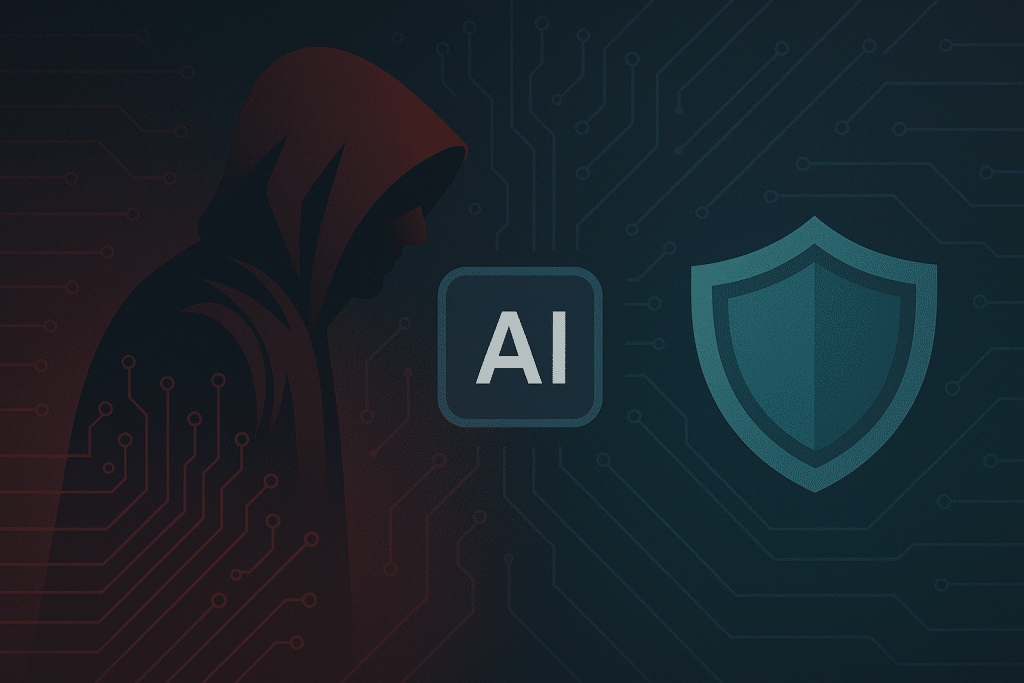AI-Powered Cyber Threats Are Rising: How Hackers Exploit AI for Sophisticated Attacks
Artificial Intelligence is no longer just a smart tool; it has also become one of the most powerful weapons for cybercriminals. AI-powered cyberattacks are now more sophisticated and widespread, significantly altering the cybersecurity world. These attacks have become faster, more convincing, and increasingly difficult to track, prompting companies and governments to reevaluate their defensive strategies. The threat is no longer theoretical; it is real and evolving quickly.
How AI Improves Cyberattacks
AI assists hackers in automating and improving their attacks. AI-powered tools scan the network for vulnerabilities in seconds and draft phishing messages so realistic that no human intervention would be needed. Experts claim that AI has lowered the entry barriers for cybercrime, enabling even novice attackers to conduct sophisticated operations. This rapid level of automation makes it simply impossible for traditional security measures to keep pace with the menace in terms of speed and volume of attacks.
Real-World AI Cyberattacks
Recent incidents highlight the severity of AI-powered threats. In one type of attack, AI was used to create fake military IDs that fooled individuals and bypassed malware installs. Alternatively, some apps secretly installed malware that affects ad fraud, potentially affecting millions of mobile users. The examples illustrate how AI is used to craft deceptive content, alongside automated attacks, which means threats, with the help of AI, have become much more efficient and widespread than conventional cybercrimes.
AI in Ransomware and Supply Chain Attacks
Ransomware has become more targeted than ever before, thanks to the use of AI. This means that attackers identify and locate vulnerable targets on an automated basis to distribute their malware and cause significant damage. On the other hand, supply chain attacks are rampant, and here, AI is used to infiltrate software providers, allowing many organizations to be affected in one sweep. Security agencies acknowledge that ransomware incidents involving AI tactics have been increasing in frequency, while incurring considerable financial and operational costs.
Threats to Critical Infrastructure
The AI-based cyberattack extends beyond the realm of personal devices or businesses. Operationally critical infrastructures, such as airports, power grids, and transportation systems, are increasingly vulnerable. 2025 was the year that saw automated airport services across Europe become a target for ransomware, resulting in flight delays and operational chaos. These incidents highlight the vulnerability of launch systems to AI-enhanced threats and underscore the need for an immediate defense mechanism.
Developers and AI Cyber Risks
Developers are also the victims of AI cybercrimes. Hackers use AI to engineer fake software downloads and updates that install Remote Access Trojans (RATs). These steal data, including cryptocurrencies, and remotely destroy antivirus software. With AI, attackers can also personalize their attacks on a large scale, which keeps developers and users at serious risk.
AI Cybersecurity Defense
If AI is a tool that helps attackers, it is equally a tool that strengthens cyber defense. Companies are adopting AI-driven security solutions that monitor real-time threats and respond instantly to them. Big tech companies process trillions of signals every day to notice any anomaly. AI can foresee attack patterns to prevent an organization from being breached. What enables attacks today is the one controlling them.
Preparing for AI Cyber Threats
Organizations and individuals have to take mitigation steps against AI-driven attacks. Proper software updates and password management remain essential. Employee training on phishing attacks is relevant. On the other hand, AI-based security tools continuously monitor the network in real-time for anomalies and respond at speeds that are incomparable to traditional methods. Pairing a trained human with an AI defense is the most effective way to mitigate the effects of modern cyber threats.
Conclusion: The AI Cybersecurity Challenge
AI-powered cyberattacks mark a new era in hacking. These attacks happen more frequently than before; they are brighter than ever and harder to detect. At the same time, AI-based defense systems are designed to effectively counter such threats. Organizations implementing an AI-powered security system can defend against complex attacks. The process of staying ahead in this digitalized arms race must continue, as cyber threats continue to expand in scope and sophistication.
Angela Spearman is a journalist at EzineMark who enjoys writing about the latest trending technology and business news.
